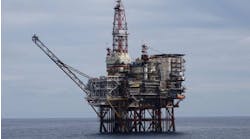Offshore staff
EDINBURGH, UK – Scottish Carbon Capture & Storage (SCCS) says it welcomes new information provided by Heriot-Watt University which questions the suitability of the Captain Sandstone in the UK central North Sea for carbon dioxide (CO2) storage.
SCCS says the area is farther west – more than 70 km (43 mi) – than that currently under active consideration for CO2 storage.
It continues that the occurrence of faults that cross-cut the seal rock of the Captain Sandstone formation and its sub-crop at the seabed are well known, and their presence has been included in various CO2 storage studies.
Industry groups and by research consortia have investigated CO2 storage within the Captain Sandstone away from cross-cutting faults and in its eastward extension, and at depths that exceed 1,000 m (3,281 ft).
These, SCCS says, have identified the connected reservoir and seabed sub-crop as beneficial, because they allow pressure to dissipate, reducing the risk of the injection site becoming over-pressured, thereby improving CO2 storage capacity and security.
Without these features, SCCS adds, the Captain Sandstone formation could store around 360 MM metric tons (397 MM tons) of CO2, but that with the sub-crop the capacity for secure storage increases to more than 1,550 MM metric tons (1,708 MM tons).
These findings were detailed in a March 2011 public report “Progressing Scotland’s CO2 storage opportunities,” page 28.
Another research study undertaken with industry to investigate storage in two or more sites in the Captain Sandstone found that this formation contains six oil and gas fields (“Optimising CO2 storage in geological formations; a case study offshore Scotland,” page 4).
This, according to SCCS, demonstrates containment of oil and gas over millions of years. In addition, CO2 is retained in the deep subsurface by a combination of factors such as the CO2 dissolving into the pore water, making the water denser and so liable to migrate downdip away from the outcrop, and by leaving a trail of microscopic micro-bubbles isolated in pores (‘residual trapping’).
The Sleipner site, adjacent to the UK/Norway North Sea maritime boundary, is an aquifer that operator Statoil has used to store CO2 for over two decades.
Learning gained from the appraisal, monitoring and operation of this and other Norwegian storage sites has been applied to the assessment of the UK Captain Sandstone, SCCS points out, and concludes that due to its location, existing infrastructure, and the suitability of the geology, it is the most promising prospect for CO2 storage on the UK continental shelf.
12/08/2017


